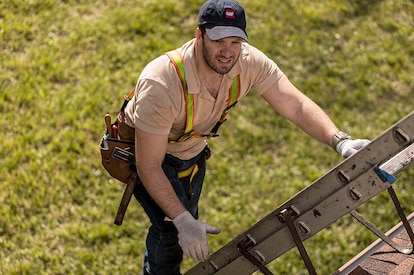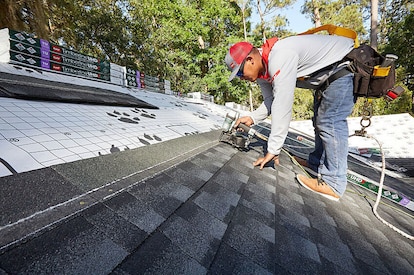
Residential Roofing
10 Ways to Use Video in Your Business Strategy
Using video in your business strategy can be a powerful way to engage and build rapport with your customers. The best part? All you need is your cell phone.GAF Real Talk LIVE host Alan Lopez sat down with GAF video specialist Pablo Nivar to discuss low-stress, low-budget, start-today actions that contractors can use to introduce video content into their business strategy. Here are some of the lessons and easy-to-follow guidance highlighted during the pair's conversation.Why You Need VideoIn today's modern world, engaging customers on multiple levels is key. Video allows you to connect face-to-face in a sense and create engaging content that's not overly promotional, which can encourage users to buy. According to a 2021 study, 80% of consumers consider trust a deciding factor in their buying decisions.Don't Stress—Start SimpleFear about entering the professional video space is the biggest hurdle Nivar says he encounters among contractors as a GAF CARE video specialist. Fortunately, you don't need a big budget or professional equipment to successfully begin your video strategy.At the start, your videos are about building relationships. Use that to your advantage by working with what you have, and focus on engaging topics instead of fancy videography.Think Authentic Videos, Not MarketingHave the instinct to sell, sell, sell? Nivar explains why you should think again and create the kind of social media video content you like. Prioritize genuine content that tells a story and builds connection.If this sounds hard, Nivar and Lopez break down 10 types of videos for you to create. For each video type, Nivar gives examples and wording you can use. You don't have to reinvent the wheel; making videos can be easy and even enjoyable.10 Types of Videos to Create for Your Social Platforms1. Before and After VideosBefore and after videos can be a powerful way to showcase your work and benefit your brand without being overtly "salesy."2. Client TestimonialsClient testimonials can build a foundation of trust for future customers, helping them see the quality work you've completed and how you've collaboarated with past customers.3. Educational ContentYou can offer educational content without giving away your expertise for free. Think about what's relevant to your regional audience and focus on teaching, not selling.4. Your Company StoryCreating a company story video shouldn't be your first action, but it can be an impactful way to imbue humanity into your brand down the line. This presents a great opportunity to share your mission and vision, as well as introduce the people that help run the business.5. FAQAnswering questions you often receive is a great way to directly engage your customer base with content that's relevant to them.6. Time LapseTime-lapse videos can fulfill the need for "how it's done" content and show the value of your work. An entire project can be distilled down to minutes.7. Tips and TricksSharing tips with homeowners builds trust with your audience and gives them something valuable to take away from the video.8. Repair How-TosEmpowering homeowners to do their own minor repairs doesn't put you out of a job. In fact, it can show them you're committed to helping them solve their problems. Keep in mind that you should never inspire customers to climb onto their own roof, and instead encourage them leave that work to professionals.9. Customer AppreciationEveryone likes to feel appreciated. Making videos that show customers you value them for choosing your business—and how it makes a difference—can potentially lead to future work with both existing customers and new clients.10. OffersLeaving sales videos for last on your creation list can actually net you more business. You want to promote your business, of course, but it's best to make authentic connections first.Tips for Great VideosKnowing what to record is one thing, but understanding how to take video to benefit your brand is another. During their conversation, Nivar and Lopez not only cover how to use video in your business strategy but also need-to-know logistics. Important topics of discussion include video length, creating calls to action without being pushy, what not to say so you don't alienate customers and other businesses, and how to engage viewers with dialogue that hooks from the start. Additionally, the pair shares tips around enhancing the customer experience during installation using quick video recordings, which just might help earn extra praise in your video testimonials.Introducing Video to Your Business StrategyIf you've never jumped into the world of video content creation, Nivar and Lopez offer simple solutions that give you the tools to launch immediately. Watch their GAF Real Talk LIVE episode for in-depth information and exact steps you can take to start creating your videos. You can even contact the pros for more guidance. Be sure to also follow GAF on Facebook for more Real Talk LIVE episodes and other quality roofing content.Remember, you don't have to go it alone. You can keep expanding your business power with the free trainings, education, and support available to GAF contractors through the CARE Contractor Training Center.
By Authors Annie Crawford
May 14, 2024





















